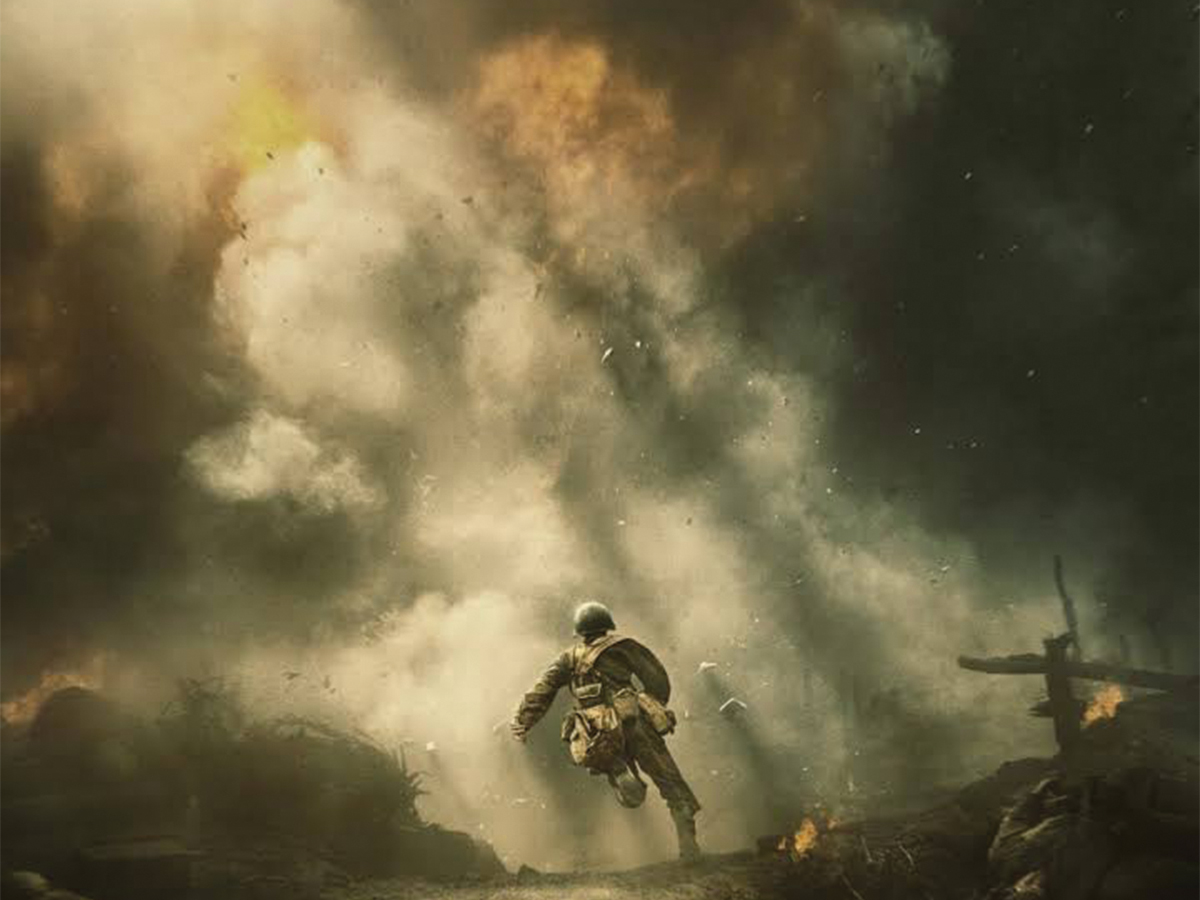
Director Mel Gibson could have created a banal war-hero movie with this World War Two biopic “Hacksaw Ridge.” While the plot somewhat utilizes the overused Florence Nightingale effect (a trope where a war soldier falls in love with their caretaker) and solely focuses its narrative on a single American war hero, Gibson still manages to craft a compelling film that distances itself from cliche and shallow personalities.
Gibson, who has done a fair share of acting in and directing both war movie flops (“The Patriot”) and successes (“Braveheart”), prevented the two-hour film from becoming too cliched by constructing an ensemble of charming characters and revealing battlezone scenes whose chilling impact resonated deeper than traditional American war films.
The story follows a young Desmond Doss (Andrew Garfield), who would later become the only conscientious objector to win a Medal of Honor in WWII, as he grows up in his small suburban town in Lynchburg, Virginia and develops his Christian faith. It is in his hometown where Doss meets and marries a doll-eyed nurse at the local hospital named Dorothy Schutte (Teresa Palmer), but it isn’t long before Doss enlists and gets sent to the Fort Jackson training camp, where he declares himself a conscientious objector and becomes a medic.
Moreover, the movie’s moderate usage of deadpan humor, especially demonstrated by the lovably cranky Sergeant Howell (Vince Vaughn), was delightfully unexpected. In fact, one of the high moments of the entire movie was the campground inspection scene, in which Howell criticizes each of the troopers based on their appearance but somehow skips over a man who is naked. When Howell reaches Doss, he compares his lanky stature to that of a corn stalk and tells his section assistant to “make sure this one stays away from strong winds.”
Although pleasant while it lasted, the humor dissipated as the direction of the movie transitioned into the solemn battlefield of Hacksaw Ridge for the Battle of Okinawa. Viewers are slowly eased into the battlefield as Doss, along with his squad members, steps over the spilled guts and intestines of other American troops.
Then, when we hear the crack of the first gunshot, all hell breaks loose and the audience is thrown into a half-hour battle scene, where Gibson demonstrates masterful cinematography by using editing and multiple camera angles to create a visceral experience.This lengthy portion of the film contains little-to-no dialogue and instead fully invests itself into the brutalities that occur on the war front, compelling the audience to care for the well-being of Doss in the midst of such a petrifying risk.
The stakes are amplified when Doss persistently stays behind on the cliff, defenseless, in order to search for men to save. Palpable tension arises when he encounters, multiple times, entire groups of Japanese soldiers who are stationed at the cliff scouring the grounds for American survivors. The fact that he has the integrity to maintain his objectiveness even when none of his comrades are around is touchingly inspirational. In one instance, he even stayed behind to heal a wounded Japanese soldier when he accidentally ventured into an underground hideout belonging to the Japanese, fully knowledgeable of the hazard he was facing by committing a 10-second act of kindness.
While the characters in the film were admirable, there were still some flawed elements of Gibson’s portrayal of Japanese soldiers. There seemed to be a barbaric nature in the way that they fought, such as when an entire group of Japanese soldiers mercilessly stabbed a single American survivor to death after battle and when they carried out a failed attempt to win by faking a surrender. The vicious behavior of the Japanese contrasted with the calmer, more level-headed American soldiers, as Gibson focused on capturing the anger of the Japanese and the fear and companionship of the Americans. Toward the end, a victorious orchestral arrangement played over the Americans defeating the Japanese as though to indicate such an action as a heroic feat.
While not monumental in its work, “Hacksaw Ridge” will change your current perception of an American war hero. It followed the legacy of a man who refused to defend himself with arms but carried a faith that propelled him further in performing his duties than any other man in his combat section. Gibson brilliantly captured this untouchable strength in virtue through an enthralling screenplay that will “leave you hanging” off the ridge and desperate to find out what happens next every second of the way.
Rating: 7.5/10








